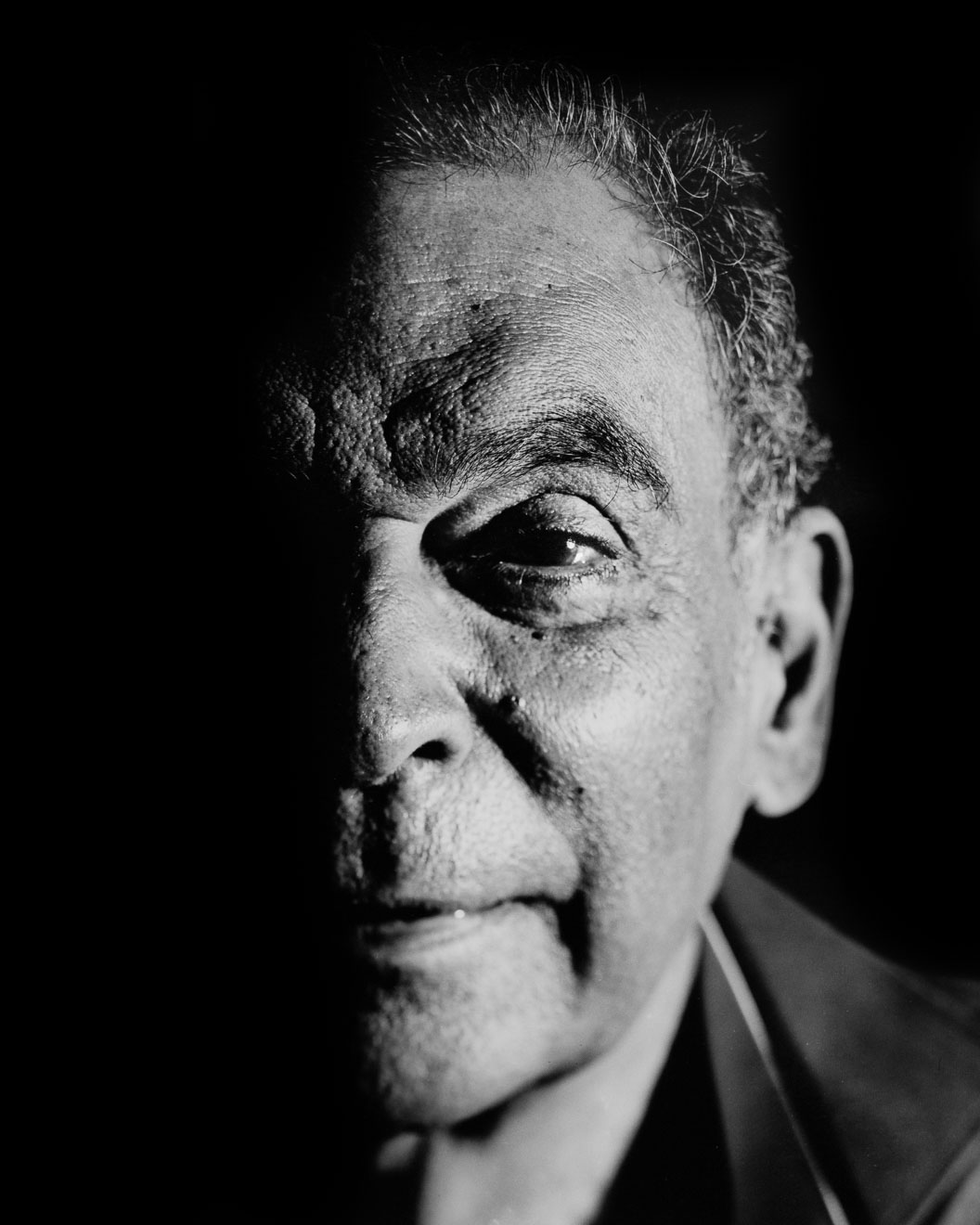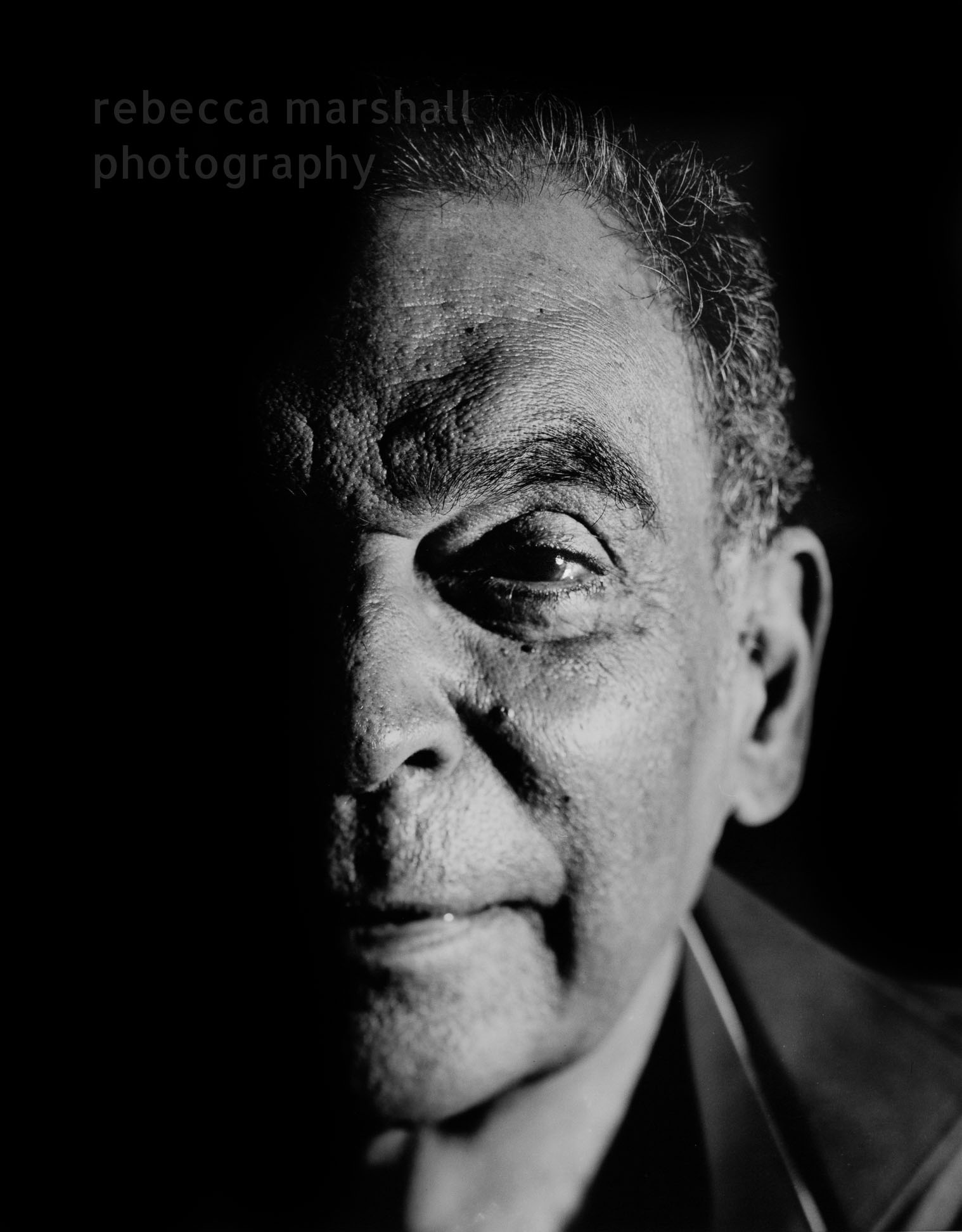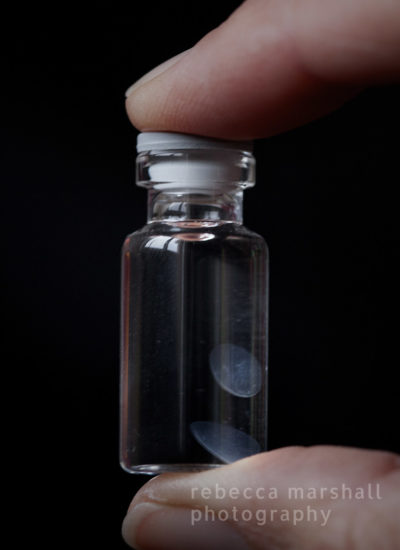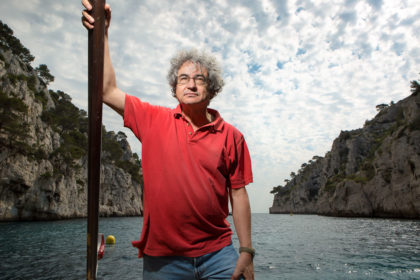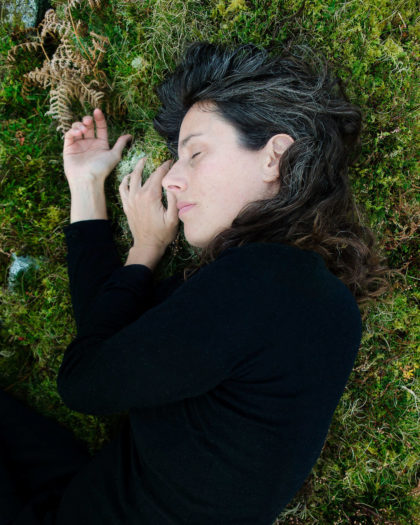One month ago, Dr Charles Ghenassia, with the aid of a laser and a very steady hand, cut open the corneas of my eyes and successfully removed the cause of my severe short-sightedness and astigmatism with his forceps (yes, literally). This man, who thus gave me the gift of 20:20 vision, has consequently earned his place as one of the Most Important Men in my Life. So to thank Dr Ghenassia, and to mark this momentous happening as a photographer, I took my large format film camera to Nice and made this single portrait of him.
Knocking on heaven’s door
I am surely not the first photographer to have had short-sightedness corrected through laser eye surgery, and I know that eyes are as precious to a non-photographer as to a photographer, but I still felt an added frisson when I thought about opening up and messing around with a body part that my vocation depends entirely upon. However, without contact lenses or glasses, I had been virtually blind since childhood and, in recent years, had increasingly pondered the option of surgical correction, perhaps at a clinic in London or Paris. Finally, as 2016 dawned and I decided that the time was right, I chose to stay in the South of France. Nice hosts one of the best laser eye surgeries in the country and pioneer ophthalmic surgeon Dr Ghenassia is its leading light.
In today’s most common surgical method to correct myopia, a laser opens a flap in the cornea and burns away the extraneous part of the eye’s lenticle that creates blurred vision. Quick and simple. However, I opted for the new Lasik ‘ReLEx SMILE’ technique, supposedly better for the stability of the cornea. A laser makes a much smaller incision in order to go in and cut around the lenticule – and then a surgeon uses hand tools to remove it. At some point during the 30 minutes that I was in the hot seat (or rather lying frozen-cold with shock under a space blanket), the assistant surgeon ran out of encouraging things to say and so I just heard the tuts and occasional sharp intakes of breath from Dr Ghenassia as he retrieved the lenticules. His voice sounded worryingly tense as he commanded me to “resist the pressure!” that he was putting on my eyeball. This is a difficult command to respond to when your eyes are pinned open, under anaesthetic, and your brain is dealing with such levels of stress that make understanding instructions – let alone applying them to exercising of eyeball muscles you barely knew existed – somewhat challenging. I learned afterwards (and fortunately not before) that the lenticule is a little like a perforated coupon – all the fibres along the ‘dotted line’ need pulling free to remove it. At any rate, by this stage of the event (when, co-incidentally, ‘Knocking on Heaven’s Door‘ was playing on the operating theatre radio), it was far too late to change my mind.
In royal company
In a change from my regular editorial and corporate photography assignments, I made Dr Ghenassia’s portrait with my analogue 5″x4″ view camera. Large format photography has remained more or less unchanged since the 19th century and my wooden, bulky camera requires patient adjustments to frame the picture, painstaking focusing with a magnifying glass on an upside-down, dark image visible only under a black hood, and making fine adjustments to the tilt of the lens plane to control the depth of field. I exposed, in this case, only 2 sheets of film.
This slow and deliberate process suited my mood and goals perfectly. Working in black and white, too, enabled me to concentrate only on the form of the surgeon’s face, without the distraction of colour. I used lighting that would make his dominant eye (the one that leads during surgery) the core subject of the picture, and created a stark difference between the shadow ‘blind’ side of his face and then the pin sharp, clear view of this dominant eye, to communicate the surgeon’s raison d’être. Later, during an evening spent in my darkroom at home fixing the 2 negatives, and then in the photographer’s lab in Nice where I hand-made this final print, I found the patience required in the darkness before the magical moment of switching the light on to assess the negative, and watching the image appear on the paper print in the chemical bath, peculiarly fitting for this rather special picture.
During the portrait sitting, Dr Ghenassia smoothly accepted my transformation from patient to photographer, and that it was his turn to sit quietly and not move. Speaking softly now, this quiet, unassuming man was very interested in my archaic camera, and it was a privilege to share the portrait process with someone so knowledgable about the science behind vision, which is, of course, the same basis for the technology of photography. His lunch hour was shorter than planned and time was tight to prepare and take his portrait, but I couldn’t fault his reason for rushing away: “Sorry I thought I could stay a little later but I’m operating on the Prince of Monaco’s brother this afternoon – I must make sure I’m on time“.
Nervous post-op photographer
By the time I took this portrait, 3 weeks after the operation, my eyes were functioning well, but it would be misleading to think that my vision and ease with photography had been normal straight away. Fresh after the operation, my vision was blurry and halo-ey, and my eyes were painfully dry and super-sensitive to bright light. Things were gradually improving day by day, but I had been very nervous before my first photographer assignment, 9 days on. Would I be able to work despite eye pain outdoors in the sunshine (I can’t work with sunglasses, so the special protective dark glasses that the clinic hands out weren’t going to help)?. Would my lack of tolerance to bright light, and exaggerated perception of contrast, affect my assessment of tones when setting up the portrait and lighting it ? Later, aside from the physical discomfort of looking at the backlit screen of my computer, would I be able to optimise the tones in the final images correctly?
In the event, the South of France was kind to me, offering an unusually cloudy day. My portrait subject, too, had not chosen to wear a bright white shirt (which can complicate exposure for a photographer at the best of times), and, afterwards, when my French magazine client received the photos and replied that “elles sont parfaites!“, I was more than a little relieved.
Myopia in a jar
Today, the soft-style 1930s Hollywood effect of my post-op world is gone. My eyes are a little dry, still needing artificial tears (or frequent weepy movies), and bright South of France sunshine is likely to remain uncomfortable for a while yet. But I have stopped physically wincing at traffic lights going green and I’m no longer wearing my Stevie Wonder specs in brightly-lit shops and restaurants (much to the relief of my companions).
Every day, I marvel at the technology that has enabled my new ‘precision vision’ – and the unexpected changes in visual perception I’m experiencing. I’ve just about stopped flinching when objects come very close to my face (a change in the relative proportions of objects at varying distances from my eyes means that close-up objects appear much bigger than they did with corrective lenses). The other day, I sat, motionless, on a bench on Nice seafront, simply moving my eyes far right and far left, up and down, and grinning with delight as I explored my new peripheral vision and the clarity of seagulls, waves and the faces of (the slightly perplexed-looking) passers-by. On a mountain hike, a small white-ish pebble on the path stopped me dead in my tracks. Contrasted against its grey neighbours, it had, to my new eyes, all the dramatic beauty of a rare shaft of sunlight piercing black storm clouds.
I suppose that as my brain catches up with my miraculous new vision, the novelty will wear off and I will simply see. But, should I ever forget, I have a rather precious object to act as a reminder. Just after the operation that evening in Nice, as my heart rate was returning to normal in the recovery room, I was given a tiny, stoppered jar. Inside, stored for safe-keeping, were the lenticules that Dr Ghenassia had removed from my eyes: my myopia in a bottle.
